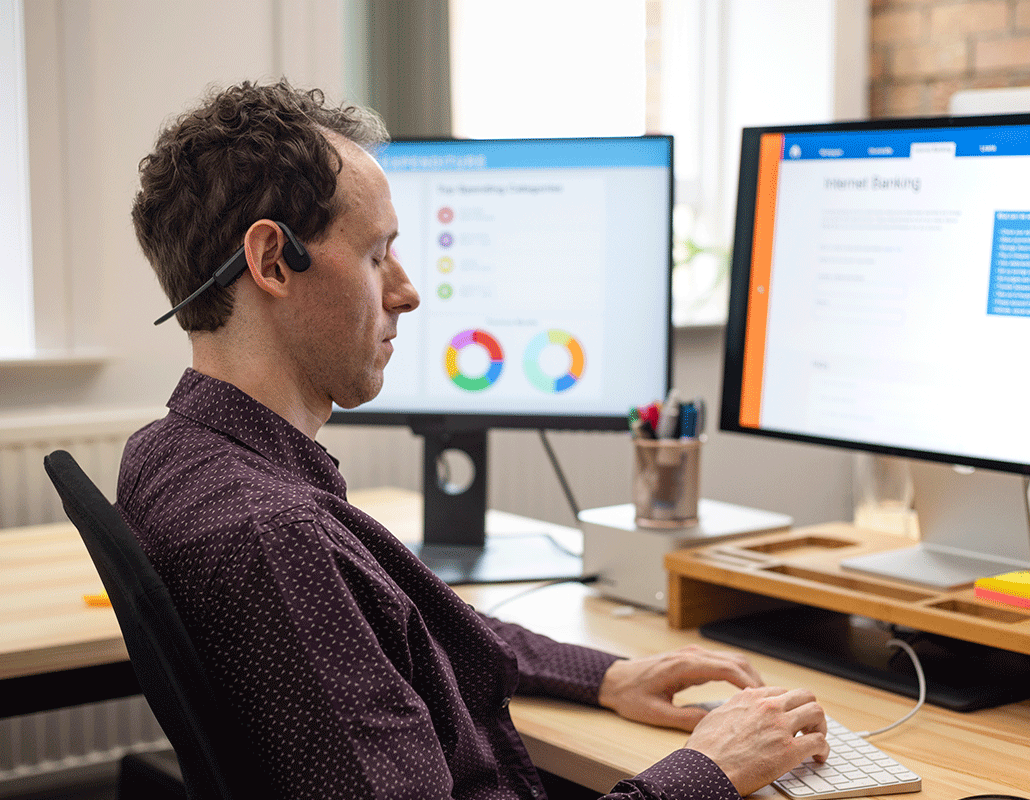5 Productivity Tips for Your Neurodivergent Brain

Over 15% of people in the UK are neurodivergent*, meaning their brains function, learn, and process information differently. Neurodiversity encompasses various conditions such as ADHD, autism, dyslexia, dyspraxia, Tourette syndrome, and sensory processing disorder. These conditions manifest uniquely in everyone but typically affect executive functions, which include working memory, cognitive flexibility, and inhibition control. As a result, generic productivity tips may not be as effective for neurodivergent individuals as they are for those who are neurotypical. In this article, we share five productivity strategies tailored for neurodivergent individuals, perhaps like yourself, suitable for both home and the workplace.
1. Create an environment fit for you
Before you can be productive, the first step is to create an environment tailored to your needs. This will vary based on your sensory requirements and if you work in an office full-time, controlling various factors might be challenging. However, it's beneficial to communicate with colleagues to see how they can accommodate you.
This might include requesting to sit away from a window if you're sensitive to light or working in a booth if you become overstimulated by background noise. Individuals with dyslexia may need workplace adjustments such as dyslexia-friendly fonts, while those with dyspraxia might benefit from assistive technology, for example.
At home, you may want to consider factors like lighting and colour schemes that have a calming effect. By minimising sensory overload, you can create a more comfortable environment, allowing you to work with less discomfort.
2. Try the Pomodoro Technique - your way
The Pomodoro Technique is a time management method that involves breaking work tasks into 25-minute intervals, known as Pomodoros, followed by a five-minute break. After completing four Pomodoros, take a longer 15-minute break. This technique can be beneficial for individuals with ADHD, as it helps prevent hyper-focusing on a single task for too long.
For individuals with autism, the Pomodoro Technique can also enhance productivity by providing structured time management and reducing feelings of overwhelm. The predictable routine it offers can be especially beneficial for those who thrive on consistency.
However, it's also important to tailor the length of each Pomodoro session to your individual requirements. If you find that 25 minutes is too short or too long, don't hesitate to adjust the duration to better suit your concentration span. Flexibility is key with this method, so feel free to experiment with different time intervals until you discover what works best for you.
3. Daily trackers
Daily trackers can be invaluable tools for neurodivergent individuals who thrive on routine. By breaking tasks into manageable chunks, these trackers can enhance organisation and provide clear visual cues. This can help outline what needs to be done and what has already been completed.
These trackers can boost productivity both in and out of the workplace. You can create them yourself using programs like Excel or download templates online. Daily trackers don't have to be complicated, and you can customise them whether that's for building new habits, tracking work hours, or monitoring project progress.
4. Combine creativity with structure
You might be creative but if you have ADHD, for instance, you might find it challenging to follow strict structures, depending on how your symptoms manifest. But by embracing creativity, you may be able to enhance your productivity. Instead of relying on rigid, pre-structured planners, think about using planners that allow for doodling, and experimentation to help you stay organised without feeling restricted.
Flexible planners can accommodate changes and adjustments, making it easier for you to maintain productivity and adapt to your workflow. By integrating creativity into your planning process, you can create a more supportive and effective system that aligns with you.
5. To-do apps for neurodiversity
There are several apps specifically designed to support neurodivergent individuals.
For instance, the Time Timer app is a visual timer that uses a red disk to represent the passing of time, making it easier to visualise the time remaining. This can be particularly helpful for those who benefit from visual cues.
Another app is dubbii, which is tailored for individuals with ADHD to help them manage daily tasks more effectively.
Routinery is a further app suggestion, especially for those who struggle with establishing and maintaining daily routines.
These apps can significantly improve time management and task completion for neurodivergent individuals, making daily life more manageable and productive.
* Support for neurodiversity | Equality, Diversity and Inclusion